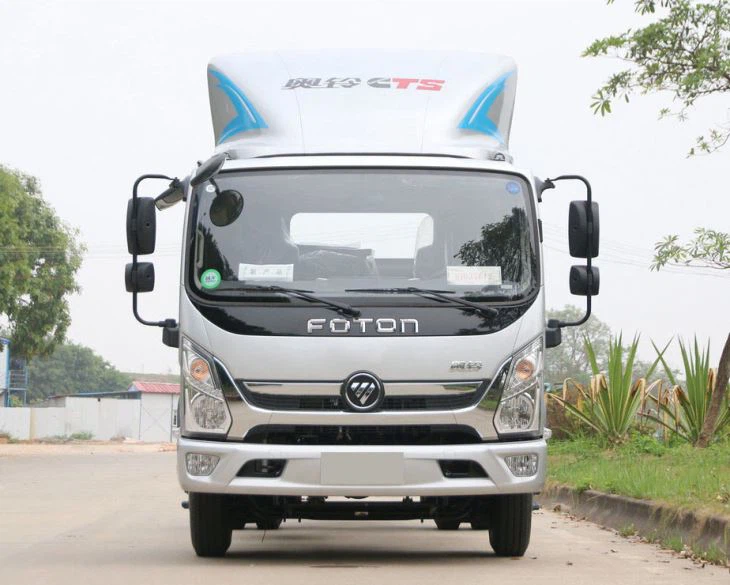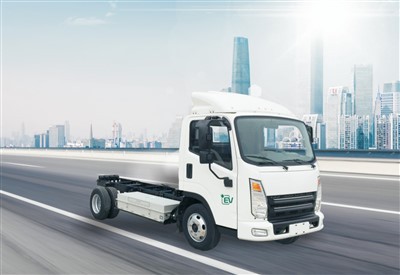Trucks of the 1940s: A Journey Through History

The 1940s were a transformative decade, especially for the automotive industry. The trucks of this era represent a significant evolution in design, functionality, and technology. In this article, we will explore the characteristics, models, and impact of 1940s trucks, delving into the historical context in which they were created and how they played a vital role in shaping the future of transportation.
Historical Context of Trucks in the 1940s
The 1940s were defined by World War II and its aftermath, deeply affecting manufacturing and transportation. Demand for trucks surged to support the war effort, and numerous manufacturing plants shifted their production lines to meet military needs. Following the war, these trucks transitioned back to civilian life, reflecting a blend of wartime functionality and peacetime innovation.
Wartime Production and Design
During World War II, manufacturers like Ford, General Motors, and Dodge produced military vehicles alongside civilian models. Truck designs featured robust construction, higher payload capacities, and versatile engines that could withstand rough terrains.
Examples of Military Trucks
| Model | Manufacturer | Specifications |
|---|---|---|
| GMC CCKW | General Motors | 2.5 ton, 6×6 drive, versatile for cargo and troops |
| Ford GPA | Ford | Amphibious 1/4 ton, capable of land and water traversal |

The Transition from Military to Civilian Trucks
After WWII, the manufacturing sector re-adapted to civilian needs, leading to innovations in truck design. Many military models were modified for civilian use, creating a demand for durable and versatile trucks in agriculture, construction, and transportation.
Innovations in Truck Technology
The transition saw several technological advancements that defined trucking in the 1940s:
- Improved Engine Performance: Higher horsepower and better fuel efficiency were developed.
- Enhanced Suspension Systems: Improved driving comfort, particularly on rough terrains.
- Advanced Transmission: Introduction of automatic transmissions in select models increased ease of use.
Popular Truck Models of the 1940s
Several truck models gained popularity during the 1940s, contributing to the foundation of modern trucks. Below are notable examples:

Chevrolet Half-Ton Pickup (1947)
The 1947 Chevrolet Half-Ton Pickup marked the first post-war design, boasting a modern style, wider cab, and improved payload capabilites, making it a favorite among farmers and tradespeople.
Ford F-Series (1948)
The introduction of the Ford F-Series in 1948 defined a new generation of trucks, characterized by robust design, powerful engines, and a variety of models catering to different needs.
Dodge Power Wagon (1946)
The Dodge Power Wagon became popular for its off-road capabilities and rugged design, appealing to those needing a dependable work vehicle in challenging environments.
International Harvester KB Series (1947)
The KB series offered various configurations catering to both light and heavy-duty needs, highlighting versatility in the trucking industry during that era.
Design Evolution and Exterior Features
The design of trucks in the 1940s evolved significantly, moving away from utilitarian looks toward more stylish and functional designs.
Body Styles
Common body styles included:
- Pickup Trucks: Preferred for personal and commercial use.
- Flatbed Trucks: Ideal for transporting goods and materials in various industries.
- Panel Trucks: Designed for businesses needing cargo space with an enclosed rear portion.
Color and Finish
Trucks of the 1940s often featured simple but attractive color palettes, with many models showcasing bright colors that were appealing to consumers.
Impact of Trucks on Post-War Economy

The 1940s marked a pivotal moment in the American economy, with trucks playing a crucial role in transportation and commerce.
Support for Industries
Trucks allowed for efficient movement of goods, supporting various industries including:
- Agriculture: Delivering crops and supplies to markets.
- Construction: Transporting materials and equipment to job sites.
- Retail: Distributing products to stores and businesses.
Societal Changes
The increase in truck ownership encouraged the development of the suburbs, as they enabled easier commuting and transporting goods from urban centers to residential areas.
Collector’s Guide: Trucks from the 1940s
For enthusiasts and collectors, 1940s trucks represent not just a piece of history but also a valuable addition to any collection. Here are key points to consider when collecting these vintage vehicles.
Finding a 1940s Truck
Many enthusiasts have had success finding 1940s trucks at:
- Classic Car Shows: Networking with other collectors.
- Online Auctions: Websites dedicated to classic vehicles.
- Local Classifieds: Neighborhood and community ads often feature classic vehicles.
Renovation Tips
Restoration: Many owners choose to restore their trucks to original conditions, which can provide immense personal satisfaction as well as value:
- Research the original specifications to maintain authenticity.
- Source parts from specialty suppliers or salvage yards.
- Consider professional help for complicated engine repairs.
Frequently Asked Questions
What are the most popular truck brands from the 1940s?
Some of the most popular truck brands of the 1940s include Chevrolet, Ford, Dodge, and International Harvester, each with their models that captured the market’s attention.
How can I determine the value of a 1940s truck?
The value of a 1940s truck can depend on its condition, rarity, originality, and market demand. Consulting valuation guides or experts can provide a more accurate assessment.
Are 1940s trucks reliable for everyday use?
1940s trucks can be reliable for everyday use when properly maintained, however, they may require more frequent repairs compared to modern vehicles. It’s essential to consider the available parts and expertise for restoration.
Can I modify a 1940s truck?
Yes, many enthusiasts choose to modify their 1940s trucks for improved performance or personal preference. Popular modifications include engine upgrades, brake enhancements, and aesthetic customizations.
Where can I find parts for a 1940s truck?
Parts can be sourced from specialized auto restoration companies, online marketplaces, classic car restoration shops, or local classified ads featuring vintage vehicles.
What is the best truck model to start with for a new collector?
The Chevrolet Half-Ton Pickup (1947) or Ford F-Series (1948) are excellent choices for new collectors due to their popularity, availability of parts, and supportive collector community.
Conclusion
The story of trucks in the 1940s transcends mere transportation; it’s about innovation, resilience, and the evolution of an industry that laid the groundwork for modern trucking. Understanding the historical significance, technological advancements, and unique features of these vehicles provides not only a glimpse into the past but also an appreciation for their role in shaping today’s automotive landscape.
